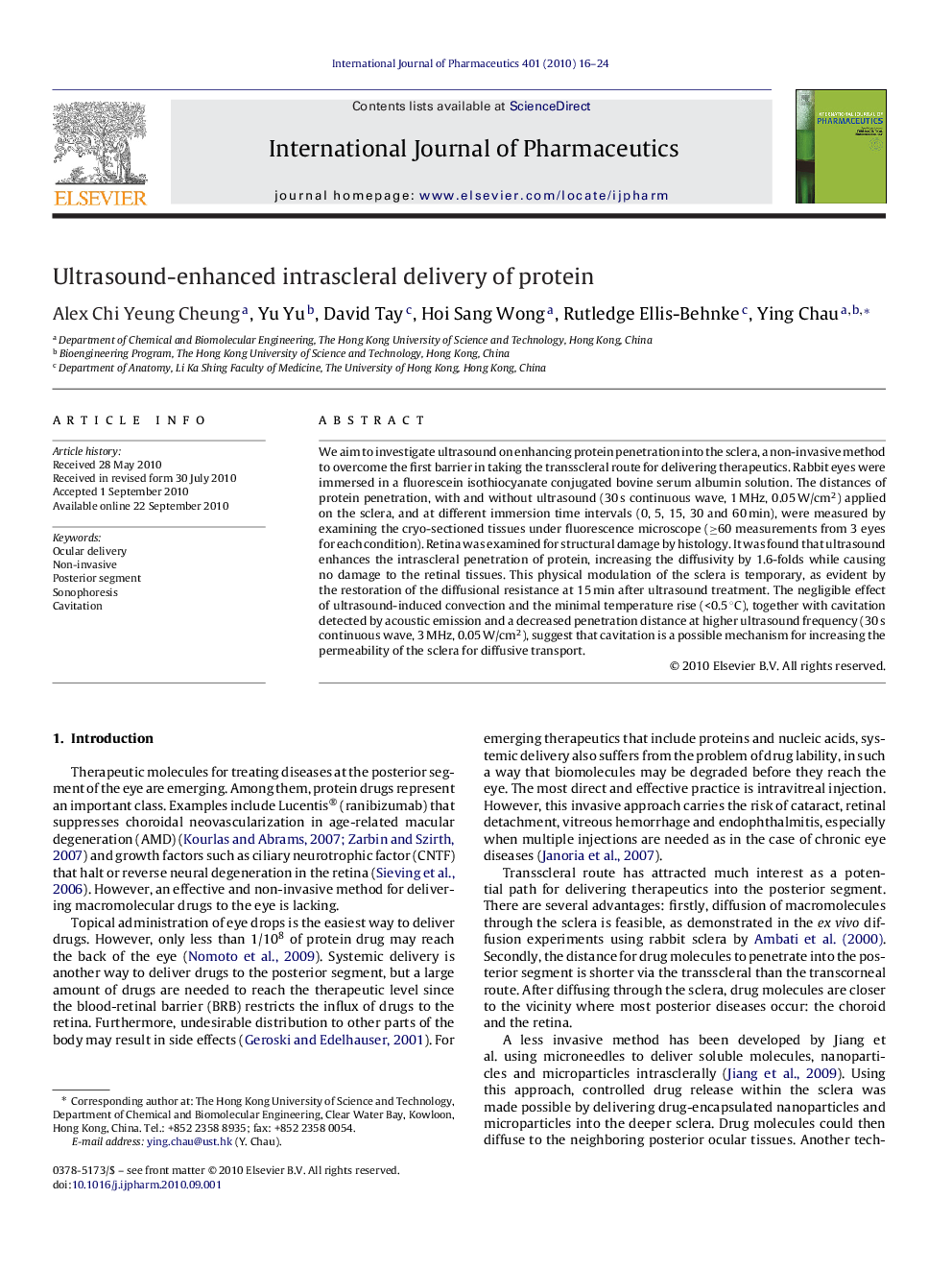| Article ID | Journal | Published Year | Pages | File Type |
|---|---|---|---|---|
| 2503670 | International Journal of Pharmaceutics | 2010 | 9 Pages |
We aim to investigate ultrasound on enhancing protein penetration into the sclera, a non-invasive method to overcome the first barrier in taking the transscleral route for delivering therapeutics. Rabbit eyes were immersed in a fluorescein isothiocyanate conjugated bovine serum albumin solution. The distances of protein penetration, with and without ultrasound (30 s continuous wave, 1 MHz, 0.05 W/cm2) applied on the sclera, and at different immersion time intervals (0, 5, 15, 30 and 60 min), were measured by examining the cryo-sectioned tissues under fluorescence microscope (≥60 measurements from 3 eyes for each condition). Retina was examined for structural damage by histology. It was found that ultrasound enhances the intrascleral penetration of protein, increasing the diffusivity by 1.6-folds while causing no damage to the retinal tissues. This physical modulation of the sclera is temporary, as evident by the restoration of the diffusional resistance at 15 min after ultrasound treatment. The negligible effect of ultrasound-induced convection and the minimal temperature rise (<0.5 °C), together with cavitation detected by acoustic emission and a decreased penetration distance at higher ultrasound frequency (30 s continuous wave, 3 MHz, 0.05 W/cm2), suggest that cavitation is a possible mechanism for increasing the permeability of the sclera for diffusive transport.
